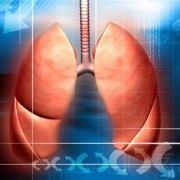 Photo: Getty Images
Photo: Getty Images
Most people are familiar with tuberculosis, which is a disease caused by the bacterium, Mycobacterium tuberculosis. The germ is spread by air borne transmission, when an infected person coughs or sneezes. This same bacterium causes latent tuberculosis (TB) infection. Individuals with latent TB do not have any symptoms and do not have TB disease.
What is Latent Tuberculosis (TB) Infection?
Latent TB infection is an infectious disease infection that has been contained by the host’s immune system. The bacteria are inactive. Individuals with latent TB infection are not contagious and cannot spread the infection to others.
Tuberculosis usually affects the lungs, but it can affect other parts of the body, such as the brain, the kidneys or the spine. As long as the immune system functions normally, an infected person will not have symptoms. However, if the immune system fails in fighting off the tuberculosis germs, the infection becomes active tuberculosis disease. This can happen at any time.
The CDC estimated 5 to 10 percent of untreated cases of latent TB infection will develop TB disease at some time in life. About half of these individuals will convert to active TB within the first two years of infection. The risk is considerably higher for people with weak immune systems.
If Latent TB infection Does Not Cause Symptoms, How is it Diagnosed?
A person with latent TB infection usually has a skin test or blood test result indicating the infection. She has a normal chest x-ray and a negative sputum test. She will not feel sick.
Targeted tuberculosis testing for latent TB infection identifies persons at high risk for developing tuberculosis. The high risk group includes people who have had a recent infection with Mycobacterium tuberculosis or who have clinical conditions that increase the risk for infection, patients with organ transplants and immunosuppressed patients.
Two tests are used to detect the infection. The skin test is used most often. A small needle is inserted under the skin. The special needle contains tuberculin, which is a special testing material. In two to three days, the site is examined by your health care provider. A raised bump at the site of the injection indicates a positive result. In some cases, a blood sample is obtained. This blood test measures how the person’s immune system is reacting to the bacteria.
How is Latent TB Infection Treated?
The Centers for Disease Control and Prevention recommends treatment be initiated after the possibility of TB disease has been excluded. Four treatment regimens use the medications, isoniazid (INH), rifapentine (RPT) or rifampin (RIF). The CDC advised a modified treatment if the known source of the infection has drug-resistant tuberculosis.
One treatment regime includes a daily dose of isoniazid or a dose twice weekly, if the medication is administered by a health care professional. Treatment lasts for nine months. A second treatment plan uses a daily dose of the same drug for six months or a twice daily dose for six months, if the patient is receiving direct observed therapy.
The third regime uses a once weekly dose of isoniazid and rifapentine for three months administered under the supervision of a health care professional. The fourth treatment plan includes a daily dose of rifampin for a four month duration.
Sources:
Centers for Disease Control and Prevention: The Difference between Latent TB Infection and TB Disease. Dec. 16, 2011
http://www.cdc.gov/tb/publications/factsheets/general/LTBIandActiveTB.htm
Centers for Disease Control and Prevention: Targeted Tuberculin Testing and Treatment of Latent Tuberculosis Infection, June 9, 2000, accessed Dec. 16, 2011
http://www.cdc.gov/mmwr/pdf/rr/rr4906.pdf
Centers for Disease Control and Prevention: Testing for TB, Dec. 16, 2011
http://www.cdc.gov/TB/topic/testing/default.htm
Centers for Disease Control and Prevention: Treatment for Latent TB Infection, Dec. 16, 2011
http://www.cdc.gov/tb/publications/factsheets/treatment/LTBItreatmentopt...
Reviewed December 21, 2011
by Michele Blacksberg RN
Edited by Jody Smith




Add a CommentComments
There are no comments yet. Be the first one and get the conversation started!